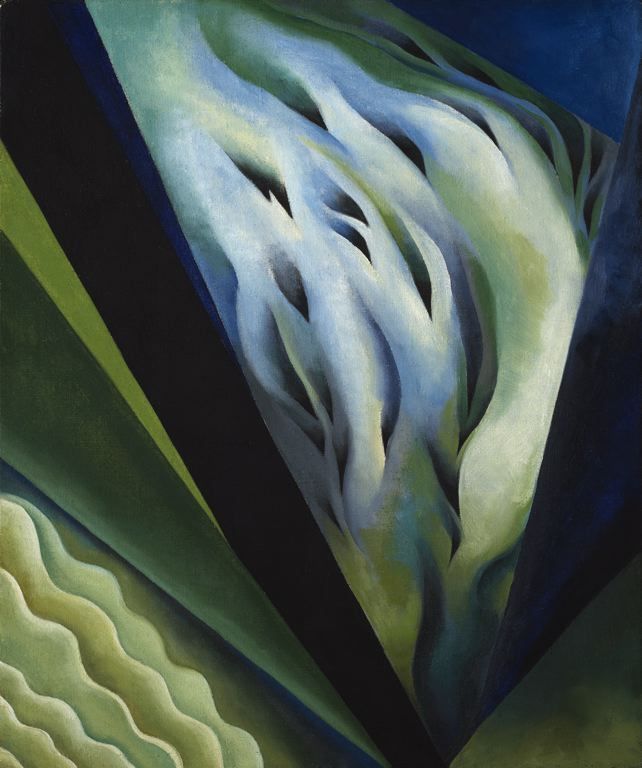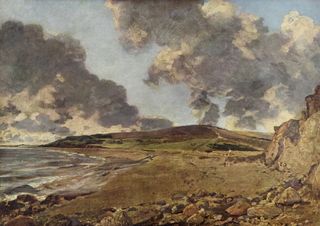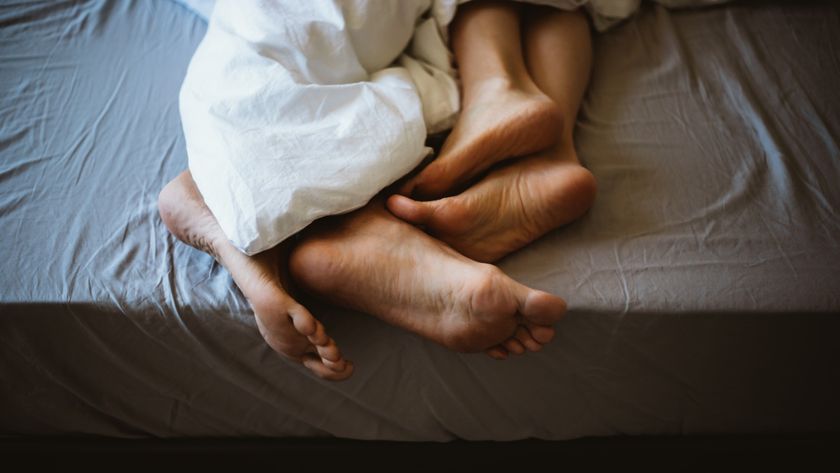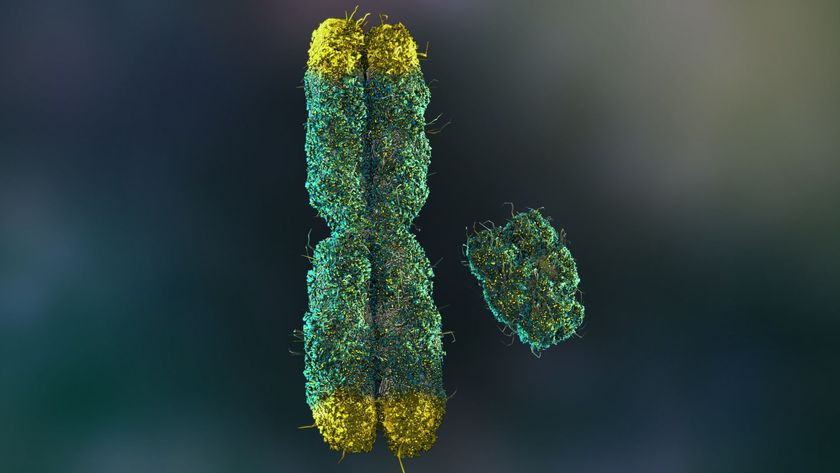Fertile Women See Georgia O'Keeffe's Erotic Art as Sexier

Being in a fertile phase of the menstrual cycle makes women more likely to describe subtly erotic art in erotic terms, a new study finds. The research could hint at evolutionary underpinnings of female desire.
Women in the study saw Georgia O'Keeffe's suggestively anatomical flower paintings as sexier when they were in the first, fertile half of their menstrual cycles than when they were in the second, less fertile half, researchers reported online April 5 in the journal Archives of Sexual Behavior. For women on the birth control pill, which suppresses ovulation, O'Keeffe's paintings seemed consistently erotic all month long.
The findings fit an evolutionary psychology approach to sexuality, said study researcher Jeffrey Rudski, a psychologist at Muhlenberg College in Pennsylvania.
"Once you go a couple days after ovulation, which is pretty much the second half of the cycle for most women, from an evolutionary perspective, the thought of having sex really isn't all that important because you aren't going to get pregnant," Rudski told LiveScience.
However, Rudski added, the researchers did find evidence that human sexuality is about more than evolution: When they broke the women's menstrual cycles into four phases instead of two, women who weren't on the pill were more likely to describe O'Keeffe's work as erotic during their periods rather than during the more fertile week leading up to ovulation. That could be because the physical symptoms of their periods primed them to recognize the vulvar imagery of O'Keeffe's flowers, Rudski said.
"If there were a purely evolutionary explanation here, you would expect the opposite pattern," he said.
Erotic arts
Sign up for the Live Science daily newsletter now
Get the world’s most fascinating discoveries delivered straight to your inbox.
Previous studies on women's desire have shown that at least some aspects of attraction and desire shift over the menstrual cycle. Women prefer men with more masculine faces during fertile periods, for example. One 2010 study found that women are more likely to choose sexy clothing during fertile periods, perhaps reflecting a peak in lustiness brought on by hormones. [Read Booty Call: How to Spot a Fertile Woman]
But with the exception of the clothing-choice study, almost all research on women's desire has used explicit stimuli — otherwise known as "naughty pictures" — to test women's responsiveness, Rudski said. Thus, the women couldn't help but know the studies were about sex. Rudski wanted to know how women would respond if they didn't know they were being asked about sexual desire.
So he and his student co-authors, Lauren Bernstein and Joy Mitchell, chose an artist known for her "Wait, is that a…?" style of painting flowers. They pre-tested O'Keeffe paintings on a focus group of students and picked the five most erotic, which the group decided were "Red Canna" (1923), "Jack-in-the-Pulpit IV" (1930), "Grey Line with Black, Blue and Yellow" (1923), "Red Poppy" (1927) and "Slightly Open Clam Shell" (1926).

To distract participants from the true goal of the study, the researchers chose paintings from abstract artist Joan Miro. They also used paintings from English Romantic painter John Constable, whom Rudski described as "probably the most nonerotic artist I know of."
The researchers set up an online survey to send one painting from each artist to 83 female volunteers every six days over the course of a month (128 participants originally signed up, but not all completed the full study requirements). The women, who believed they were taking part in a study about mood and perception of art, answered questions about their emotions, stressors and responses to the art. They then wrote open-ended narratives about what the art meant to them. At the end of the study, they were asked whether they were taking hormonal contraception and about the timing and length of their menstrual cycles.
Fertile imagery
As expected, the participants saw O'Keeffe as more sexual than Miro or Constable. One wrote, "This is a flower that also looks like a vagina emerging out of a fire."
But responses also depended on hormonal state. Among women who weren't taking birth control pills, 31 percent included sexual themes in their narratives during the first half of their cycles, compared with 9 percent during the second, less fertile half. Women on birth control showed no significant difference in description, regardless of time of month.
There were drawbacks to the secretive study design, Rudski said. After being briefed on the study's true purpose, some women said they thought the O'Keeffe paintings looked erotic, but were too embarrassed to put it in writing, he said.
Rudski said the study supports an evolutionary view of sex, but said "there are a lot of problems with that perspective when you talk about sexual behavior in humans." Humans, he said, often actively avoid pregnancy — which is particularly true of the young undergraduate women in the current study. That means there are many other factors at play, Rudski said, including cognitive cues that may have linked menstruation to vaginal interpretations of the art.
You can follow LiveScience senior writer Stephanie Pappas on Twitter @sipappas. Follow LiveScience for the latest in science news and discoveries on Twitter @livescience and on Facebook.

Stephanie Pappas is a contributing writer for Live Science, covering topics ranging from geoscience to archaeology to the human brain and behavior. She was previously a senior writer for Live Science but is now a freelancer based in Denver, Colorado, and regularly contributes to Scientific American and The Monitor, the monthly magazine of the American Psychological Association. Stephanie received a bachelor's degree in psychology from the University of South Carolina and a graduate certificate in science communication from the University of California, Santa Cruz.











